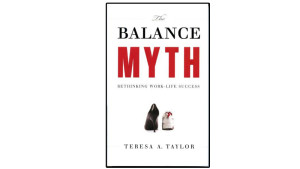This Independent Shoe and Boot Retailer Beats Zappos Every Day
Pick up any business book. Read any business article on innovation. Chances are you’ll find the name Zappos, the online shoe and apparel e-tailer, mentioned there.
For example, just this month, Donna Tam, a writer for CNET wrote the article: “Can e-tailer Zappos demolish the brick-and-mortar model?”
Sam Lewis, Associate Editor of Integrated Solutions for Retailers, wrote a similar article: “Can Zappos Bulldoze The Brick-And-Mortar Shopping Model?”
Ummm, Donna and Sam.
Here’s the answer to your question:
No.
Zappos is good. Really good. But let’s not get crazy.
Let me introduce you to an independent, brick-and-mortar, shoe and boot retailer that will never lose a customer to Zappos and gains quite a few from online shoe retailers every day.
Meet Kevin and Deb Durken, owners of The Boot Shack in St. Cloud, Minnesota. The Boot Shack is a Destination Business. Kevin and Deb took what they were already doing well, attended our Destination BootCamp, applied what they learned, and now customers willingly fly to Minnesota from all over North America to buy footwear from “The Shack”.
Could these customers buy from brick-and-mortar retailers who are much closer?
Could they go online to e-tailers like Zappos and buy from them?
They could. But they don’t.
Up above is a photo of Kevin in the rarely seen position of him sitting in the store.
The photo below is a device that you might remember if you’re old enough. It’s called a Brannock Device. It’s what they use at The Boot Shack to measure a customer’s foot, to insure that the boots and shoes they sell to customers are the right size.
When I was a child, the Brannock Device was used in every shoe store in the country. My mother never purchased a pair of shoes for me from any store without the salesperson measuring my feet with the Brannock Device.
What makes Kevin and Deb’s business different from every other shoe and boot store, including Zappos? It’s really simple:
The Boot Shack is the only store in the country that measures feet like they did in the old days, carrying Work and Western Boots in every size from 3-18 and widths 4A-4E.
Why is measuring a customer’s feet like they did in the old days so important? Kevin said it best to me:
“People come in with stuff they’ve bought off the Internet, and what we see are unhappy customers after the purchase. Everybody thinks they have to get a deal, and then they call us, and they say, ‘I got a pair of boots and can you fit them? I’d like to come in and try on other sizes of this company.’”
Kevin reminded me about basic physiology when we were talking:
“Three things get longer as you get older. The feet, the nose and the ears. That happens with even our regular customers who come in. We’ll have people who have changed one full size in as little as 4 months.”
“On the Internet, it’s a small, medium and large world. But if you really want shoes and boots that fit, that don’t hurt your feet when you wear them, that fit correctly, you use the Brannock device because the arch is what you fit, and then, you fit the width…”
“Two-thirds of all people have narrow feet, and people are shocked by that. But as we tell people: If your toes were so important, why are those $400 orthotics that are prescribed by doctors designed to fit under the arch of the foot?”
“When you spend a day in The Shack, and you see some of these people come through here, and you hear about the tens of thousands of dollars they’ve spent with the medical profession, in the doctor’s office, in the chiropractor’s office, with surgeries, and you listen to all the pain and suffering people go through, and all the issues they have. Their hips wear out, and their knees wear out, and their ankles hurt. That’s because the shoes they’re wearing don’t fit the arch properly and don’t fit the width properly.”
“Twenty or thirty years ago, you never heard these stories or saw these $400 orthotics that you do now, and now everybody’s got them because nobody wears anything that fits properly. It’s like an epidemic that gets worse every year.”
“Our wonderful repair shop that we’ve done business with for years has said that the Internet is the best thing that’s ever happened to his business because people are in there constantly with crap they bought on the Internet that doesn’t fit and they’re in getting it altered or stretched.”
The Boot Shack is a one-of-a-kind shoe and boot Destination store. When you go to The Shack, they’re going to measure your feet correctly, and then, they have a selection that allows them to fit your feet to shoes and boots that don’t pinch, rub, and hurt you when you walk.
Is there any question why people fly and drive from all over North America to buy from The Boot Shack, instead of buying from Zappos?
It’s pretty clear to me.
Oh, one last thing: In Donna Tam’s article, Zappos Lab Director Will Young wonders aloud, “How do we get people out of brick and mortar?”
I’m sorry to break it to you, Will, but you won’t get them out of this brick and mortar store.
The final 2013 Destination BootCamp is on October 1-3 and it’s for independent business owners who want to learn what Kevin and Deb are applying in their business. You can register at www.DestinationBootCamp.com.

















